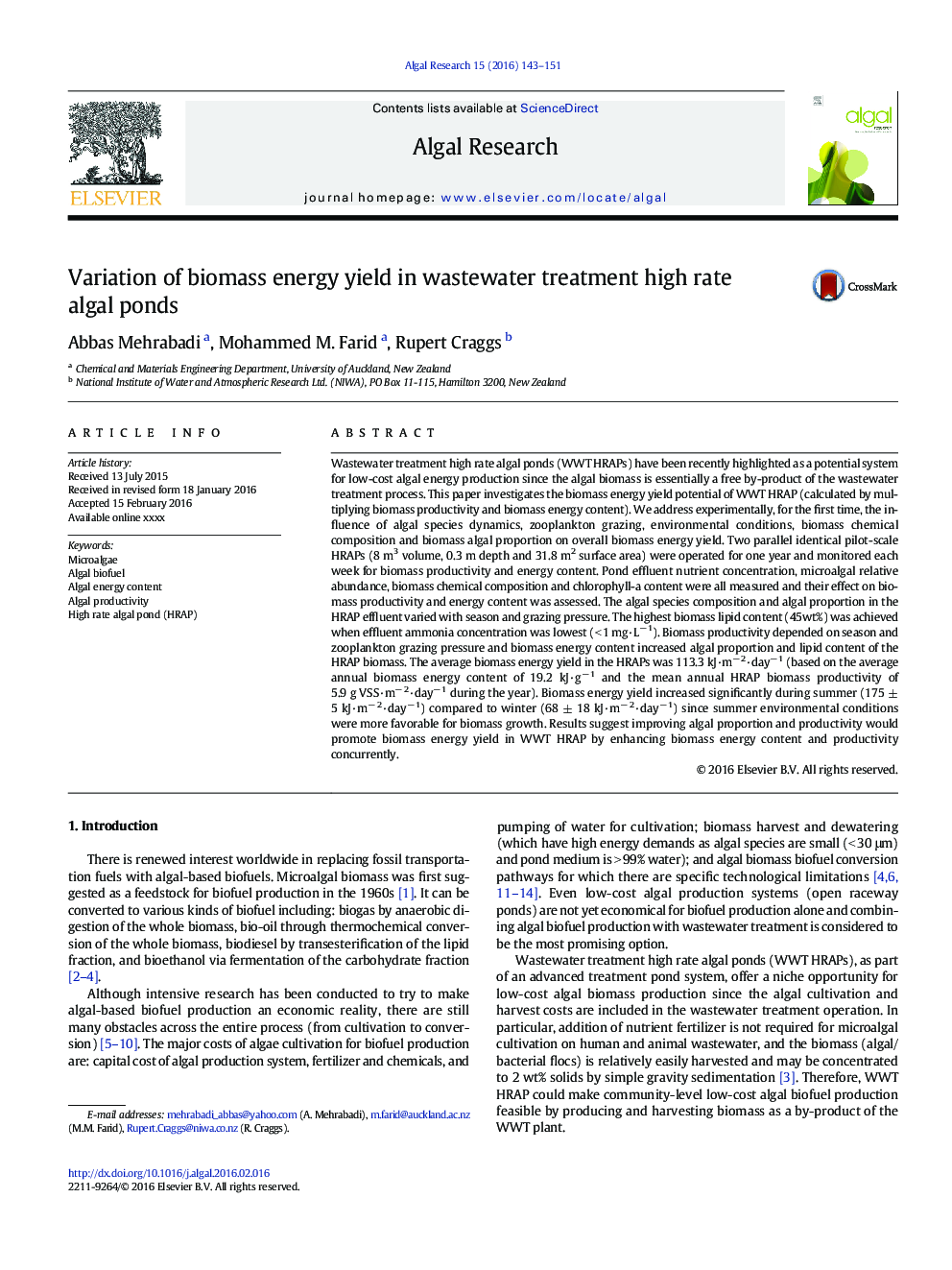| کد مقاله | کد نشریه | سال انتشار | مقاله انگلیسی | نسخه تمام متن |
|---|---|---|---|---|
| 8087253 | 1521817 | 2016 | 9 صفحه PDF | دانلود رایگان |
عنوان انگلیسی مقاله ISI
Variation of biomass energy yield in wastewater treatment high rate algal ponds
ترجمه فارسی عنوان
تنوع عملکرد انرژی زیست توده در استخرهای آب جوش در تصفیه فاضلاب
دانلود مقاله + سفارش ترجمه
دانلود مقاله ISI انگلیسی
رایگان برای ایرانیان
کلمات کلیدی
موضوعات مرتبط
مهندسی و علوم پایه
مهندسی انرژی
انرژی های تجدید پذیر، توسعه پایدار و محیط زیست
چکیده انگلیسی
Wastewater treatment high rate algal ponds (WWT HRAPs) have been recently highlighted as a potential system for low-cost algal energy production since the algal biomass is essentially a free by-product of the wastewater treatment process. This paper investigates the biomass energy yield potential of WWT HRAP (calculated by multiplying biomass productivity and biomass energy content). We address experimentally, for the first time, the influence of algal species dynamics, zooplankton grazing, environmental conditions, biomass chemical composition and biomass algal proportion on overall biomass energy yield. Two parallel identical pilot-scale HRAPs (8 m3 volume, 0.3 m depth and 31.8 m2 surface area) were operated for one year and monitored each week for biomass productivity and energy content. Pond effluent nutrient concentration, microalgal relative abundance, biomass chemical composition and chlorophyll-a content were all measured and their effect on biomass productivity and energy content was assessed. The algal species composition and algal proportion in the HRAP effluent varied with season and grazing pressure. The highest biomass lipid content (45wt%) was achieved when effluent ammonia concentration was lowest (< 1 mg·Lâ 1). Biomass productivity depended on season and zooplankton grazing pressure and biomass energy content increased algal proportion and lipid content of the HRAP biomass. The average biomass energy yield in the HRAPs was 113.3 kJ·mâ 2·dayâ 1 (based on the average annual biomass energy content of 19.2 kJ·gâ 1 and the mean annual HRAP biomass productivity of 5.9 g VSS·mâ 2·dayâ 1 during the year). Biomass energy yield increased significantly during summer (175 ± 5 kJ·mâ 2·dayâ 1) compared to winter (68 ± 18 kJ·mâ 2·dayâ 1) since summer environmental conditions were more favorable for biomass growth. Results suggest improving algal proportion and productivity would promote biomass energy yield in WWT HRAP by enhancing biomass energy content and productivity concurrently.
ناشر
Database: Elsevier - ScienceDirect (ساینس دایرکت)
Journal: Algal Research - Volume 15, April 2016, Pages 143-151
Journal: Algal Research - Volume 15, April 2016, Pages 143-151
نویسندگان
Abbas Mehrabadi, Mohammed M. Farid, Rupert Craggs,
